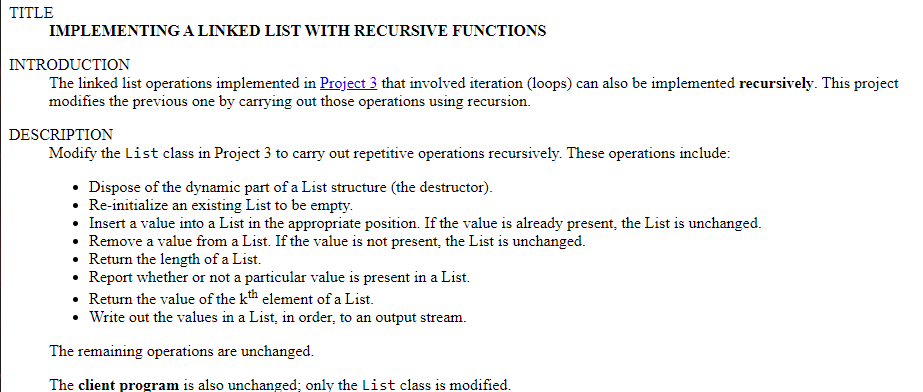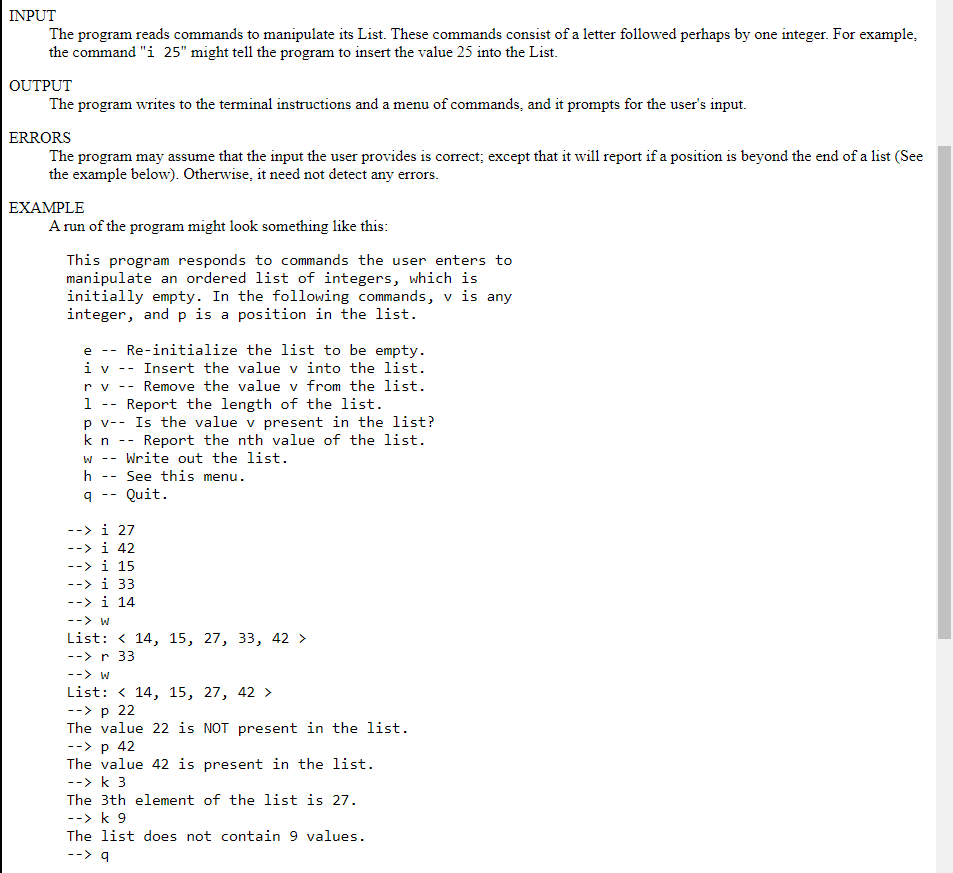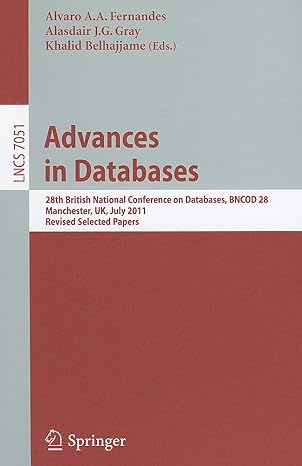Question
IN C++!! CODE to be modified listed here. #include using namespace std; //structure of node typedef struct _node { int info; struct _node* next; }node;




IN C++!!
CODE to be modified listed here.
#include
using namespace std;
//structure of node typedef struct _node { int info; struct _node* next; }node; //LinkedList class class LinkedList { private: node* head; public: //constructor LinkedList LinkedList() { head = nullptr; } //Re-initialize void reinitialize() { head = nullptr; } //function to insert a value into a list void insert(int val) { node* newnode = new node;
newnode->info = val;
if (head == nullptr) { newnode->next = nullptr; head = newnode; return; }
node* pre, * temp = head;
if (temp->info > val) { newnode->next = head; head = newnode; return; }
while (temp != NULL && temp->info next; }
if (temp != NULL && temp->info == val) { cout
newnode->next = temp; } //function to remove a value from a list void remove(int val) { node* temp, * pre; temp = head;
if (temp->info == val) { head = temp->next; temp->next = nullptr; delete temp; return; }
while (temp != nullptr && temp->info != val) { pre = temp; temp = temp->next; } if (temp == nullptr) return; temp->next = nullptr; delete temp; } //function to check is a list empty or not void isEmpty() { if (head == nullptr) cout
while (temp != nullptr) { temp = temp->next; count++; } return count; } //function to check whether or not a particular value is present in a list void isPresent(int val) { node* temp = head;
while (temp != nullptr && temp->info != val) { temp = temp->next; }
if (temp != nullptr && temp->info == val) cout
for (int i = 1; temp != nullptr && i next; }
if (temp == nullptr) return -1; return temp->info; } //function to display the list void print() { node* temp = head;
if (temp == nullptr) { cout info; temp = temp->next;
while (temp != nullptr) { cout info; temp = temp->next; } cout "
menu();
//while loop while (1) { cout "; cin >> n;
//switch command switch (n) { case 'e': list.reinitialize(); cout > val; list.insert(val); break; case 'r': cin >> val; list.remove(val); break; case 'm': list.isEmpty(); break; case 'l': val = list.length(); cout > val; list.isPresent(val); break; case 'k': cin >> k; val = list.find(k); if (val == -1) cout
return 0; }
TITLE IMPLEMENTING A LINKED LIST WITH RECURSIVE FUNCTIONS INTRODUCTION The linked list operations implemented in Project 3 that involved iteration (loops) can also be implemented recursively. This project modifies the previous one by carrying out those operations using recursion. DESCRIPTION Modify the List class in Project 3 to carry out repetitive operations recursively. These operations include: Dispose of the dynamic part of a List structure (the destructor). Re-initialize an existing List to be empty. Insert a value into a List in the appropriate position. If the value is already present, the List is unchanged. Remove a value from a List. If the value is not present the List is unchanged. Return the length of a List. Report whether or not a particular value is present in a List. Return the value of the kth element of a List. Write out the values in a List, in order to an output stream. The remaining operations are unchanged. The client program is also unchanged: only the List class is modified. INPUT The program reads commands to manipulate its List. These commands consist of a letter followed perhaps by one integer. For example, the command "i 25" might tell the program to insert the value 25 into the List. OUTPUT The program writes to the terminal instructions and a menu of commands, and it prompts for the user's input. ERRORS The program may assume that the input the user provides is correct; except that it will report if a position is beyond the end of a list (See the example below). Otherwise, it need not detect any errors. EXAMPLE A run of the program might look something like this: This program responds to commands the user enters to manipulate an ordered list of integers, which is initially empty. In the following commands, v is any integer, and p is a position in the list. Re-initialize the list to be empty. i v Insert the value v into the list. Remove the value v from the list. 1 Report the length of the list. pv-- Is the value v present in the list? kn Report the nth value of the list. Write out the list. h See this menu. Quit. e -- r V 9 --> i 27 --> i 42 --> i 15 --> i 33 --> i 14 --> W List: -->r 33 --> W List: --> p 22 The value 22 is NOT present in the list. --> p 42 The value 42 is present in the list. --> k 3 The 3th element of the list is 27. --> k 9 The list does not contain 9 values. --> 9 OTHER REQUIREMENTS Use a typedef statement to specify the item type in the class's lists, so that this type can be changed easily. Represent the elements of a list in a linked list. Maintain a list's elements in order in its linked list; this is part of the invariant of the implementation. To write out a list, overwrite the inserter operatorStep by Step Solution
There are 3 Steps involved in it
Step: 1

Get Instant Access to Expert-Tailored Solutions
See step-by-step solutions with expert insights and AI powered tools for academic success
Step: 2

Step: 3

Ace Your Homework with AI
Get the answers you need in no time with our AI-driven, step-by-step assistance
Get Started


